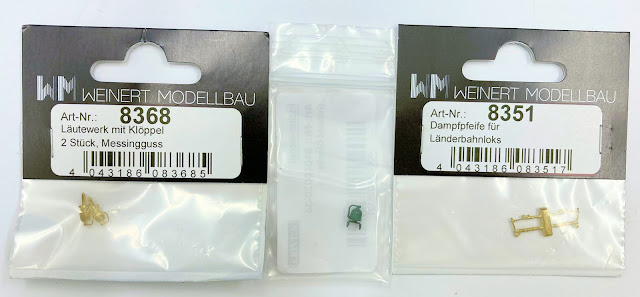The why and wherefore
Grafenwalde - Thüringen
Thursday, 15 May 2025
Grafenwalde - eine kleinbahn
Grafenwalde - a plausible fiction
The plausible fiction
The layout is based upon a Kleinbahn that was operated by the SEG, originally, a short line, in this case only almost 7km (4.3 miles) to Grafenwalde it was later extended a further 14km (8.6 miles) it was a standard gauge line that was served by tiny trains and lasted from 1881 to 1998. Due to the topography the station was a 'Spitzkehren bahnhof' or 'hairpin station' where the train changes direction. The railway had to meet the transport needs of the predominantly rural structure of the area. The main transports were Wiegand Glass, agricultural produce, livestock, fertilisers, coal and building materials.
The railcar shown below was employed until WW2, although a 0-4-0 tank loco with road number 5 plus passenger cars and goods cars was also employed. This loco was supplemented by one obtained from the Kleinbahn Neuhaldensleben–Weferlingen former roadbed is accessible today as a Wanderweg
Monday, 28 April 2025
The Dosto
DDR's Doppelstock-Gliederzug
Some background
1951
This allowed for the construction in 1951 of the first four-section double-decker DBz train (DB7), which was to solve the transport problems in the GDR. The train met the expectations of the East German railways (Deutsche Reichsbahn - DR) and increased production of double-decker car sets began, also for export to the USSR. It is worth adding that the first DBz was designed as a two-way train with a steering car.
1952
The first car with a prototype arrangement of wooden seats left the factory on February 13, 1952. There was a 2 + 3 arrangement on the upper deck (in one row across the car there were two benches separated by a passage: one had two, the other - three seats). On the lower deck, large benches were placed along the side walls and in the middle, passengers sat sideways facing the direction of travel (a scheme currently used only in places for travelers with more luggage and bicycles, and on some rail buses, eg SA103 ). In 1953, the 2 + 3 layout was also used on the lower deck. Wooden benches have been replaced with semi-soft seats. The 2 + 2 layout appeared in newer models.
1954
152x units from this series are built from 1954 onwards by VEB Waggonbau Görlitz.
1955
After the liquidation of the third class in 1955, the cars were reclassified to the second class . In 1959, after supplying the domestic rolling stock, these units were exported to other socialist countries, including the People's Republic of Poland, where they were repainted in a similar way to those in the GDR: with the big name of the carrier on the lane between the windows of two levels.
1970
The production of wagons with a push/pull element was introduced.
Paintings of Dostos by Peter KoenigModels
The
Schicht doppelstockwagen/dosto was released in '65, sixty years and
IMVHO still rivals many modern items of HO rolling stock, primarily
because it looks like a dosto. Improving and rebuilding the Schicht model click here use Google translate
This is mine, it first appeared on Pottendorf (DR) in 2003.
And again in '08, when it was sold with the layout
It resurfaced in mid '24, in need of a some TLC
In ‘25, it has new wheels, a new chassis The first upgrade was replacing the oversized wheels with Liliput L520002 wheels 10,6mm dia 24,5mm axle.
Monday, 21 April 2025
The workbench
At any one time there are a couple of locos going through the workshop
A rebuild of a Trix BR89
Conversion of Trix BR89 to DR 89 5901
Saturday, 22 March 2025
Wednesday, 26 February 2025
The farm
The small farm comprises of 95,5 hectares of land, a low house and a small yard separated by a railway line.
























































